supercars
Celebrating Women In Motorsport

It wasn’t that long ago that we celebrated International Women’s Day. This got me thinking about the number of women involved in motorsport. Are there any at present? If so, who are they? After a little research, it was revealed that there are some amazing female stars.
It’s great to see that there are many women enjoying motorsport trackside as well as women competing in racing, and they are having loads of fun along the way. Women are actively involved in various roles as motor racing volunteers, as motor racing mechanics and engineers, and as racers; in fact, you name it, and there will be women involved.
My recent experience of watching motorsport live brought me to the South Island of New Zealand in early February 2024. Yep, it was cold, but watching motorcycle racing at Teretonga Park Raceway near Invercargill was a blast. I can highly recommend the Burt Munroe as a great way to enjoy all things with two wheels, meeting heaps of great people while doing so. Yes, the rain did play a role in the day’s proceedings, but there was still a full day’s racing enjoyed by all. Winning her race in the motorcycling NZ Supersport 300, Billee Fuller, showed the boys how it gets done, covering the distance with precision and lightning quick times in the damp conditions.
Very much a level playing field, motorsport does enable men and women to compete together. Back here in Australia, Brianna Barker races on the drag strip in her own AMC Rambler Hornet. She grew up in the drag racing scene and wanted to jump in and give it a go herself. She loves the sensation of going fast over the quarter mile in around 12 seconds or less.

Erebus Motorsport’s Betty Klimenko in Australian’s V8 Supercars has had a lot of racing success. Last year, she became the first female majority team owner to win the Supercars drivers’ and teams’ championship. This followed her team’s memorable Bathurst 1000 win in 2017.
Renee Gracie has been racing cars ever since 2013. Last year, Renee raced in the Fanatec GT World Challenge Australia series held at the 2023 Perth SuperSprint meet. Renee raced in an Audi R8 GT3 LMS Ultra car and finished top of the racing board. She was first in the GT Trophy Class, where in all of the 7 races that she contested she won.

Now on to something a little different. Not all of us have the talent to race a car over all types of road surfaces, but this is Molly Taylor’s playground. Molly has been racing in rally cars for quite some time, where she debuted proper in the Australian Rally Championship in 2007. She won the F16 class, a feat she repeated in 2008.
In 2016, Molly Taylor, with co-driver Bill Hayes, became the first female driver to win the Australian Rally Championship, also being the youngest driver to do so at the time.
Mid-2020, Molly joined the Extreme E international electric rally car series. The Extreme E racing series commenced in 2021, and since then she has partnered with Johan Kristoffersson with the Rosberg X Racing team. The pair won 3 of the 5 rounds of the season, on their way to becoming the overall series champions.
In 2022, Molly Taylor joined JBXE and raced in the 2022 Desert X-Prix series.
Even at last month’s Thrifty Bathurst 500, women made up 65 of the full-time staff working on the ground between V8 Supercars and the Supercars’ teams alone. Among the foremost women in the Australian Supercars is Romy Mayer, a key player in PremiAir Nulon Racing’s rapid ascent of the ladder. Romy is one of the sport’s leading race engineers.
Driving a car is most definitely not just a man’s game!
The Nissan Hyper Force Concept Car
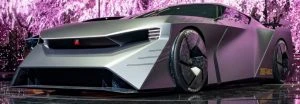
There would be little debate over whether a Nissan GT-R is a legendary supercar or not. It has been one of the most exciting cars of the last two to three decades, having even set a record on the Nürburgring racetrack of 7:08.68 min in 2013, which was achieved by the Nissan GT-R NISMO.
Recently, the Nissan Hyper Force concept car stunned the crowds at a car show in Japan. Could this concept potentially be the next new Nissan GT-R supercar?
The Nissan Hyper Force is an all-electric beast with a seriously brazen design suggesting time warp speeds! In the car’s layout is an application of some clever revolutionary solid-state batteries that enable the supercar’s output to power up to 985 kW. That’s almost 600 kW more than the current GT-R! It’s also good to see that solid-state batteries are starting to break out of the laboratory and into actual vehicles, as they have better safety performance. However, these solid-state batteries are inside something that’s got that little hit of adrenaline. This electric vehicle is electrifying.
With this level of output, the Nissan Hyper Force Concept car is carefully aerodynamically designed to ensure the air is pushed over the car to force it down on the road. In order to achieve the required levels of downforce, there are active winglets up the front end of the car to help channel air over the car, as well as a massive air scoop in the lower bumper, and an array of active fins for air manipulation. If you look at the back of the vehicle, the telltale twin LED taillight clusters are very typical of the Nissan Skyline GT-R. The massive wheel arches on the AWD machine look really spectacular, hiding what must be some serious rubber tyre profiles. If I were making a Batman movie, I’d cast this vehicle as the latest iteration of the Batmobile.
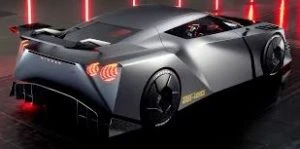
The doors open upwards and forwards in a gullwing-like action. Once the doors are opened, the onlookers are presented with a stunningly wild interior, featuring Lamborghini-crazy styling that is incredibly futuristic, offering sizzling red LED lighting vibes for high-speed driving modes. Gentler GT modes light up the interior in a blue colour. There are plenty of information displays and stylish graphics, as you’d expect. The interior styling continues the edgy, angular diagonal lines of the exterior, giving a Batmobile vibe. And did I see harness style seatbelts in there?
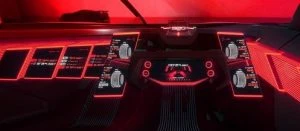
The Nissan Hyper Force concept was at the Japanese car show to inspire people, and to give them a taste of what a new roadgoing Nissan supercar (potentially GT-R) of the future might look like. This is seriously cool! Here’s hoping that we’ll see some of the ideas trickling down. I particularly like the idea of the ambient lighting changing with the driving style, so I hope that we see that one in upcoming Nissan models. I’d also like to see the harness-style seatbelts making their way into regular cars, though they’d take a bit of getting used to, especially for a women (but they could easily be an improvement over the three-pointers we’re used to).
Find out more and have a drool in the official promo video from Nissan:
Australia’s Best Racing Circuits, and a Bit of Porsche News at the End.
Australia is a racing car enthusiast’s haven. When professional car racing first began in Australia, it lacked the local presence of manufacturers from brands like Ferrari and Mercedes – both of which helped establish a strong racing tradition in Europe. Despite Europe’s success, Australia was able to build racetracks down under that Australians and people around the world enjoyed visiting to watch – and even today they deliver some of the very best motor racing has to offer.
5 of the most famous racetracks in Australia would have to be:
- Phillip Island

You can find the Phillip Island Circuit situated about 2 hours outside of Melbourne City. Its racing heritage harks back to the 1920s. The current racetrack has been in use since 1956, although it has undergone minor changes during its life. Phillip Island is a wonderfully free-flowing circuit with a stunning backdrop of Port Phillip Bay. This famous track is loved by both motorcycle racers as well as those from the car racing fraternity. Phillip Island is currently a permanent yearly fixture for the MotoGP calendar.
Loads of motorbikes are included in the race circuit’s fastest lap times, with a Yamaha YZR–M1 ridden by Maverick Viñales in 2019 claiming the quickest lap time of 1 min:28 sec.49. You have to look down to 57th place before finding the quickest lap time accomplished by a car. 57th place was run in 1 min:38 sec.02 in a Porsche 918 Spyder driven by Matthias Hoffsummer. A 2020 BMW M3 ran around Phillips Island in 1 min: 45 sec.03 – a car that may be a little more recognisable and common to the masses.
- The Adelaide Street Circuit

The Adelaide Street Circuit hosted the Australian F1 Grand Prix in the 90s. This famous track saw racing icons Alain Prost, Aryton Senna, and Michael Schumacher score podiums on their journey to winning their F1 World Driver’s Championship. Because it was regularly the last race of the F1 season, the Adelaide Street Circuit track often had high stakes drama, with its competitors looking to win the last points of the season on what is a fast and flowing circuit. This drama added to the buzz in the air, playing host to a great party atmosphere once the final race was completed.
Although Melbourne has more recently created another famous racetrack – Albert Park – the Adelaide Street Circuit is still special. Although F1 cars no longer rip around this circuit, the V8 Supercars event has become one of the its best series.
The fastest time (1 min: 15 sec.381) ever recorded on the Adelaide Street Circuit was performed by Damon Hill back in 1993, while driving his Williams FW15C Renault Formula One.
- Albert Park

As mentioned above, Albert Park is in the seaside suburb of St Kilda, just outside the Melbourne CBD. Albert Park Circuit has played host to the Australian Grand Prix since 1996 and is a track that provides fantastic motor racing. Albert Park is also a track that anyone can tackle a lap of the circuit in their own car. It’s possible to drive around the circuit many times on any day of the week.
A Formula One Car called the Ferrari F1–75 driven by Charles Leclerc this year (2022) set a time of 1 min:20 sec.260, which is the fastest time ever set on the track. To give you an idea just how quick that is – Craig Baird drove his Mercedes AMG GT3 car around in 1 min: 54 sec.7311. Craig Baird’s record time in the GT3 Class is 8th quickest for a car more recognizable with cars can be driven on our roads legally.
- Sandown Raceway

Sandown Raceway is a track that, along with Phillip Island and Albert Park, enhances Victoria’s claim to possessing Australia’s greatest collection of famous racetracks. Until Albert Park arrived on the scene, Sandown was regarded by many as Victoria’s premier circuit. Sandown Raceway is where brilliant Aussie racers like Jack Brabham, Alan Jones, and other heroes have shown off their skills to a home audience. Sandown Raceway circuit still finds regular use today, most notably among drag racing enthusiasts.
- Bathurst/Mount Panorama

Formula One and MotoGP tracks inside Australia are rightfully famous. Events in these high-end categories are truly global, and even our home-grown Aussie drivers have made a name for themselves racing in these very events. But Mount Panorama/Bathurst is perhaps the most famous track of all to most Australians.
The New South Wales circuit plays a yearly host to the V8 Supercar race, and it has been a place where legendary battles between Ford and Holden have been played out before loyal fans. Mount Panorama is also where brilliant racers like Peter Brock and Craig Lowndes have cemented their status as giant motor racing legends.
The outright fastest time for getting around the Mount Panorama Track was accomplished in an Audi R8 LMS, where the 2 minute barrier was broken in a time of 1 min: 59 sec.2910; Christopher Mies was the R8’s driver. The quickest Touring Car that has ever made it round the circuit was a Ford Mustang GT driven by Chaz Mostert in the Supercars Championship of 2019 with a time of 2 min: 04 sec.7602.
Nurburgring (Germany)

And for something a little different… Porsche has just reclaimed the production EV Nürburgring lap record from Tesla, running a time of 7 min: 33 sec with a Porsche Taycan Turbo S EV. The Tesla Model S Plaid’s lap time was 7 min: 35 sec set in September of 2021.
The production performance EV class is rapidly growing and features a variety of body styles. This means Porsche will likely be challenged by faster EVs in the near future.
Two of the Most Beautiful Cabriolet Speedsters
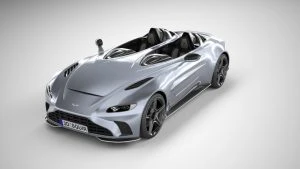
Aston Martin V12 Speedster
Two of the most beautiful cabriolet speedsters of recent times cost a king’s ransom and go like stink. Because most of us will only ever get to read about them, I thought I’d give them a plug here just so we’re all aware that there are still some very extraordinary cars being made. Arguably, and rightly so, these two cars may in your opinion not be quite as exceptional as a McLaren Elva, Chevrolet Corvette Convertible, a BMW Z4 convertible or even a Ferrari SF90 Spider, however if I had a Bentley Mulliner Bacalar or an Aston Martin V12 Speedster parked in my garage I would be especially pleased.
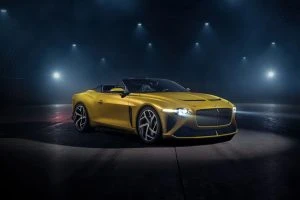
Bentley Mulliner Bacalar
Only 12 of the Bentley Mulliner Bacalars will ever exist, so, as you can imagine, the price tag of one of these is eyewatering (2.8 million AUD). Eighty-eight Aston Martin V12 Speedsters aren’t that many either; they fetch close to 1.5 million dollars new. It is almost inevitable that these two cabriolet cars will sell for more on the second-hand car market just because they are so rare and desirable. However, if you happen to be reading this, and are a squillionaire, then here are two of the most attractive cars on the planet.
Born out of the Bentley Continental stable, under the hood of the Mulliner Bacalar lies a W12 engine that has been fettled to produce 485 kW of power. It sits hunkered down on wider tracks and mesmerizing new wheels, and it boasts carbon-fibre front and rear wings, new light clusters (which look really cool) and a super glitzy centre console. Inside the Bentley Bacalar is a world of luxury and fine materials, as you would expect. Exclusive patterns on the switchgear knurling, for example, are only ever found on the Bacalar models. Then there are the uniquely quilted seats, where each seat boasts as many as 144,199 stitches. The veneer inserts that are used in the wrap-around cabin are from old river-wood trees from East Anglia peat bogs and are 5,500 years old (don’t tell the greenies this!).

Aston, on the other hand, has created a sweeter front end that looks sharper than the more muscular Bentley. Seated down low in the cockpit, the Aston also has the more futuristic dash design, with the chrome-rimmed air vents on the vertical either side of the digital driver’s display. 3-D printed rubber is used throughout the cabin, and then the bar that runs between the seats is a superb feature that looks exciting as well as ensuring strength to the open-top speedster’s on-road rigidity.
Aston’s V12 Speedster uses a potent 5.2-liter twin-turbo V12 that produces 515 kW and 752 Nm of torque. This power is sent to the rear wheels via an eight-speed automatic gearbox and a mechanical limited-slip differential. A 0-100 km/h sprint can be completed in around 3.6 seconds and the top speed arrives at a limited 186 mph (298 km/h). It sounds stunning when the throttle opens out.
The stats are that the Bentley Bacalar can run through the 0-100 km/h sprint in less than 4 seconds, and the 6-litre W12 twin-turbo engine packs 900 Nm of breath-taking torque, capable of hurling you to speeds well in excess of 200 mph (320 Km/h). AWD ensures maximum grip for all occasions, of course.
